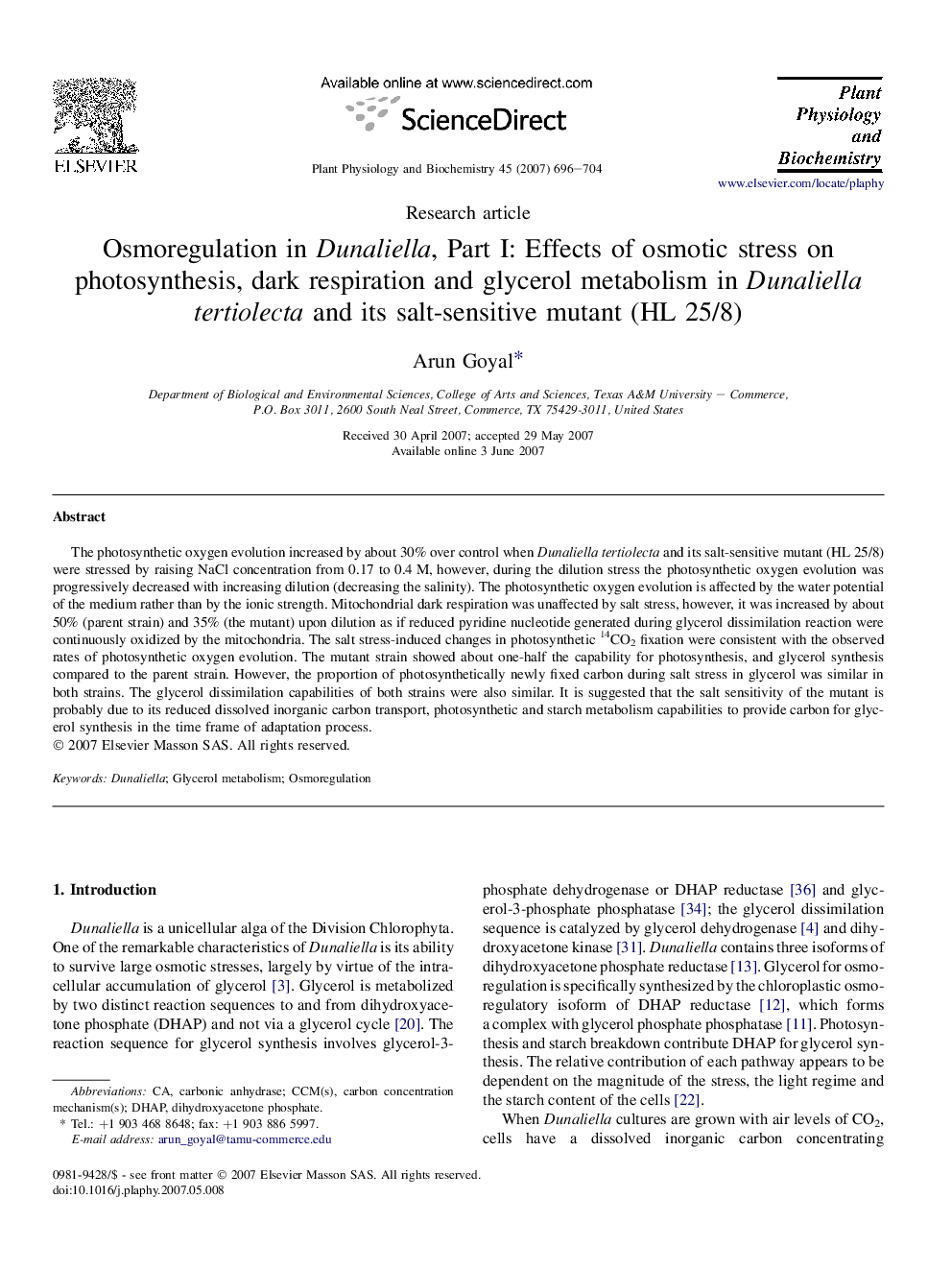| Article ID | Journal | Published Year | Pages | File Type |
|---|---|---|---|---|
| 2016695 | Plant Physiology and Biochemistry | 2007 | 9 Pages |
The photosynthetic oxygen evolution increased by about 30% over control when Dunaliella tertiolecta and its salt-sensitive mutant (HL 25/8) were stressed by raising NaCl concentration from 0.17 to 0.4 M, however, during the dilution stress the photosynthetic oxygen evolution was progressively decreased with increasing dilution (decreasing the salinity). The photosynthetic oxygen evolution is affected by the water potential of the medium rather than by the ionic strength. Mitochondrial dark respiration was unaffected by salt stress, however, it was increased by about 50% (parent strain) and 35% (the mutant) upon dilution as if reduced pyridine nucleotide generated during glycerol dissimilation reaction were continuously oxidized by the mitochondria. The salt stress-induced changes in photosynthetic 14CO2 fixation were consistent with the observed rates of photosynthetic oxygen evolution. The mutant strain showed about one-half the capability for photosynthesis, and glycerol synthesis compared to the parent strain. However, the proportion of photosynthetically newly fixed carbon during salt stress in glycerol was similar in both strains. The glycerol dissimilation capabilities of both strains were also similar. It is suggested that the salt sensitivity of the mutant is probably due to its reduced dissolved inorganic carbon transport, photosynthetic and starch metabolism capabilities to provide carbon for glycerol synthesis in the time frame of adaptation process.
